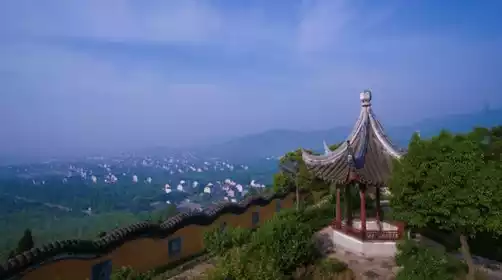Day 1 Shanghai → Suzhou → Wangshan - Qizishan - Shangfangshan → Shanghai
All day
8:00 Gather at the designated location of China-TravelNote and sign in.
We set off on time at 8:15. On the way, the team members introduced themselves to each other and helped the new members integrate as quickly as possible. The staff played interactive games and there was laughter and joy along the way.
Arriving at the foot of Upper Qingming Mountain around 10:00 AM, everyone packed up and disembarked. The team leader led a warm-up exercise, and then we set off along the trail. We journeyed through dense bamboo forests, along winding mountain paths, and through deep, secluded valleys. We passed Dapaodun and Wushanling, arriving at Qianyuan Temple on Qizi Mountain.
Qizi Mountain is located in the southwest suburbs of Suzhou City. It is named after the seven high mounds on the mountain. It is a relic of the Spring and Autumn Period and the Warring States Period. It is commonly known as Qipao Mound and Qizi Mound. According to legend, it is here that the ancients buried their seven sons.
Qianyuan Temple is solemn and majestic. Standing in the temple, you will feel the leisurely Zen atmosphere. Looking out from afar, you can see the vast mountains and rivers and the green forests all around.
Then along the way you will pass by Zhangqiao Forest Farm, Huamei Spring, Jiulong Playing in the Water and other scenic spots.
At noon, we had lunch at Jiulongtan and everyone took out the prepared food to replenish their energy.
After lunch, we continued our journey into Wangshan. From Baohua Temple, we ascended back to the ridgeline, passing Phoenix Mountain, Yada Ridge, Longwang Pond, and Yaofeng Mountain, ultimately returning to the heart of the Wangshan Scenic Area. Here, we found a wide variety of farm-style dishes, offering a hearty meal for those who descended earlier. This moderately difficult route, interspersed with forest roads and firefighting trails, passed through the villages of Wangshan and Zhangjiaqiao, offering stunning views overlooking Wangshan Village. Ascending to the observation deck, we gazed upon the lush greenery and boundless scenery, a breathtaking sight.
Around 16:00, everyone boarded the bus to return to Shanghai.
Around 18:00, we returned to the starting point in Shanghai. Everyone was reluctant to leave and kissed goodbye with tears in their eyes, looking forward to meeting again at the next event.
There will be slight adjustments to the closing points in autumn and winter, and the specific details will be announced by the tour leader on the day!







